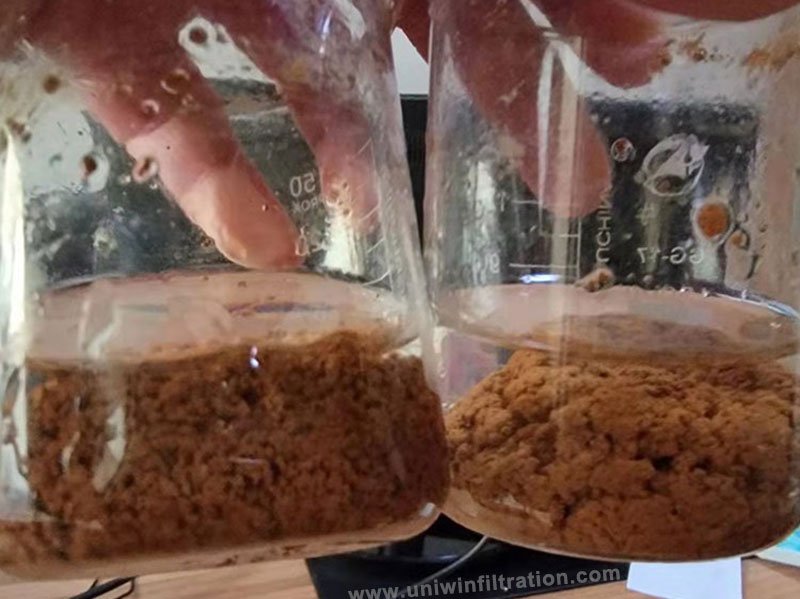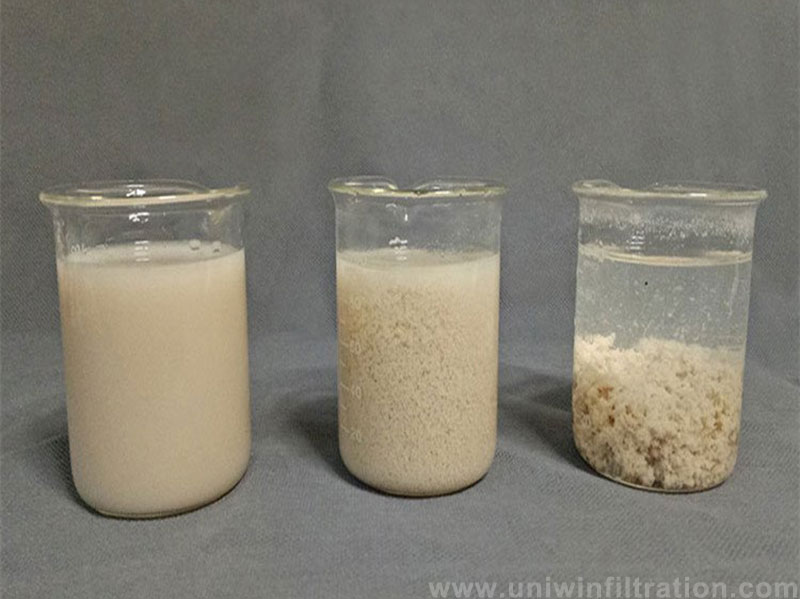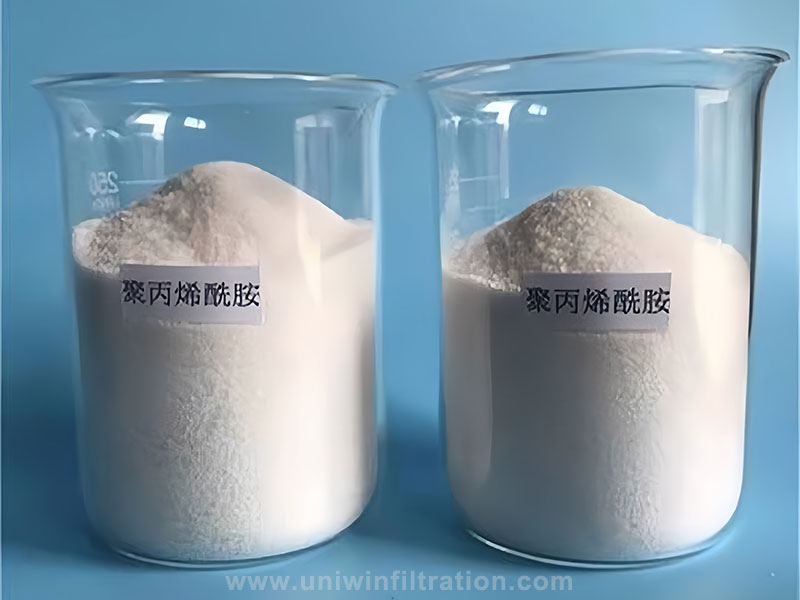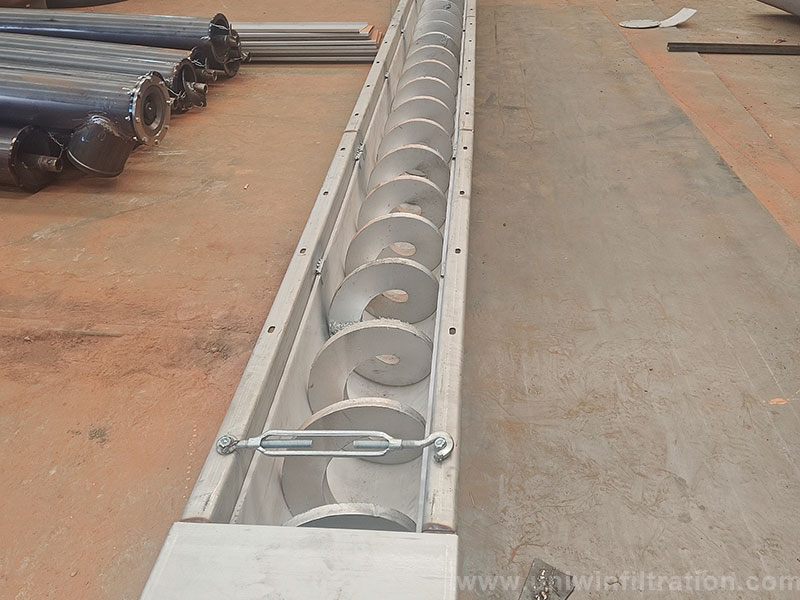Polyacrylamide
Polyacrylamide (PAM) is a high molecular weight polymer widely used in various industrial fields such as water treatment, papermaking, oil extraction, mineral processing, sugar refining, and chemicals. It is primarily used as a flocculant, thickener, drag reducer, and binder.
In the filter press workflow, material pretreatment before filtration is a crucial step affecting filter press efficiency, filter cake solids content, and equipment operational stability. Appropriate pretreatment methods, especially the use of flocculants such as polyacrylamide (PAM), can significantly improve filter press performance.

Purpose of Material Pretreatment
- To form stable, highly filterable flocs: By adding chemical agents, suspended solids are aggregated into larger particles, facilitating pressure filtration.
- To reduce filter cloth clogging: To mitigate the impact of fine particles and sticky substances on the filter cloth, extend its service life.
- Shorten the filter press cycle: Increase filtration speed and equipment capacity。
- Improve filter cake clarity: Lower filter cake moisture content results in lower post-treatment costs (e.g., incineration, landfill).
- Improve filtrate quality: Proper pretreatment leads to clearer filtrate, facilitating subsequent reuse or discharge.

The Working Principle of Using PAM and PAC Together:
PAC is a coagulant that neutralizes the surface charge of colloidal particles in water, breaking their stable state and rapidly forming micro-flocculations for initial sedimentation.
PAM is a flocculant whose long-chain structure further “bridges” the initial micro-flocculations, agglomerating them into larger flocs, strengthening the floc structure, and facilitating dewatering and pressure filtration.
Adding PAC first, followed by PAM, ensures a clear hierarchy in the coagulation → flocculation process.
The Core Function of Polyacrylamide in Pretreatment
- Flocculation and agglomeration
PAM molecular chains have polar groups that can neutralize or bridge charges on the surface of suspended or colloidal particles, promoting the aggregation of fine particles into large flocs. - Improving the dewaterability of materials
Pulp pretreated with PAM has a lower moisture content and less free water between particles, which is beneficial for achieving a higher dryness of the filter cake during pressure filtration. - Reduce energy consumption and time in the filter press
Flocculated materials experience less resistance during the filter press process, shortening the time the filtrate passes through the filter cloth and reducing the operating load on the equipment.

Precautions for Use
The prepared concentration is generally 0.1%–0.3%, and it cannot be directly added to the stock solution.
The storage environment should be protected from light and dryness, and high temperatures should be avoided.
When dissolving, use an iron-free stainless steel or plastic stirrer to avoid excessive shear force that may cause chain breakage.
Avoid mixing with cationic surfactants to prevent inactivation.





